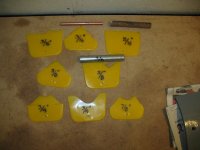Brandenberger
Hot Rolled
- Joined
- Sep 19, 2017
Hi,
Slowly making progress on a 10ee, have several assemblies (tailstock, apron, saddle, ELSR) stripped and cleaned and ready for paint. On the fence about spraying vs brushing, but for now still working on prep:
Two questions particularly from those of you who have done nice paint jobs on these types of machines--
1) how do you mask the various screw/dowel holes for masking and painting? Are there disposable foam or plastic plugs you use for that?
2) how do you apply body filler to complex surfaces like the ELSR bracket? Also relevant to various other machine parts that have inside corners that are usually partially filled to give a smooth and easy to clean profile. I don't see very many formed spreader tools.
Thanks,
Phil
Slowly making progress on a 10ee, have several assemblies (tailstock, apron, saddle, ELSR) stripped and cleaned and ready for paint. On the fence about spraying vs brushing, but for now still working on prep:
Two questions particularly from those of you who have done nice paint jobs on these types of machines--
1) how do you mask the various screw/dowel holes for masking and painting? Are there disposable foam or plastic plugs you use for that?
2) how do you apply body filler to complex surfaces like the ELSR bracket? Also relevant to various other machine parts that have inside corners that are usually partially filled to give a smooth and easy to clean profile. I don't see very many formed spreader tools.
Thanks,
Phil




